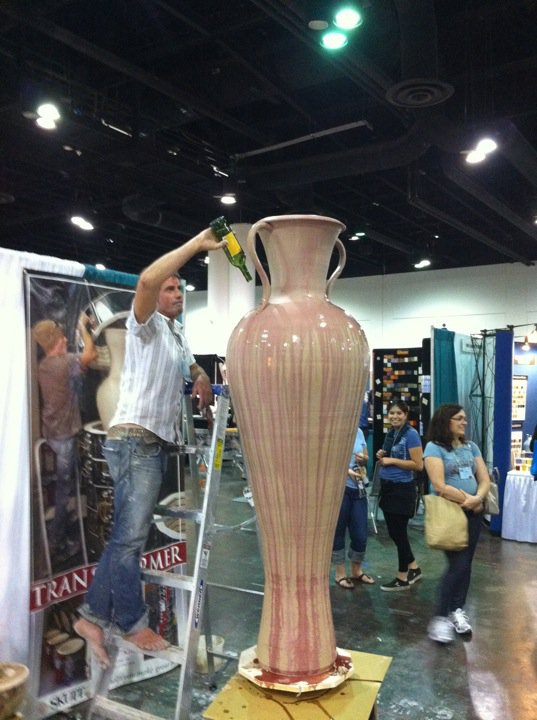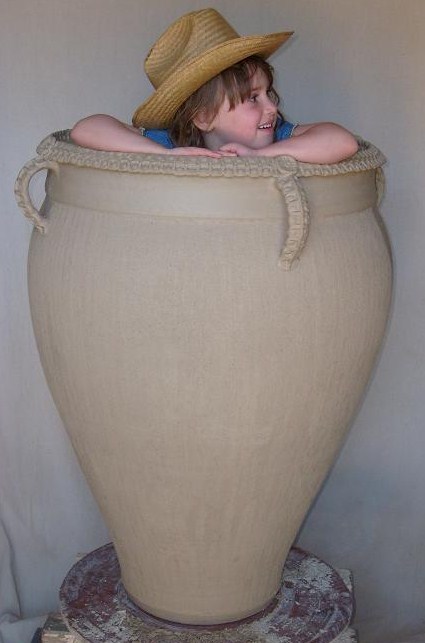The Art of Building Large Terracotta Pottery
In all my days of fascination with clay, there is one tool that I would call my tool of choice: the wheel. But the two things that have influenced me most are my teachers and my travels.
Over the past thirty years or so I have had the great fortune of traveling throughout the world. My interest in large format pottery began in the early 90s and quickly became one of the key purposes of my explorations.
There are many ways to build a large, ceramic container. In Thailand, I watched two assistant potters feed a rope of clay the size of my leg and 20’ long, over their shoulders to a master potter, who would very slowly spin a crude wheel and pinch the coils on top of each other. This seems to be the most common way cultures build large terra cotta containers.
Recently I was a guest artist at a conference where, over the course of three days I made a 7’ Amphora using two wheels. I was positioned next to next to a family of Koreans who were making traditional Kimchi fermentation jars. These things were huge! They used the same coil/pinch method, but paddled the shapes into the forms. In Georgia (Eastern Europe), they have been fermenting red wine for thousands of years in enormous ceramic vases called Qvervi; they use the same method. Spain probably has the largest pots I’ve ever seen called Tinajas. These absolutely spectacular containers are also used for fermentation, as well as storing water.
Throughout my travels I have found that around the world, large terracotta forms are still produced for a great variety of uses.








Looked u up on the web after noticing you on the back cover of Ceramics Monthly (June/July/August) in an ad for Skutt wheels. Enjoyed your blog on the Eye of the Day website.
Hi Terry,
Thank you for reading and checking us out. We actually don’t get Ceramics Monthly so we haven’t seen the ad. If you could send us a photo that would be great. Again, appreciate the feedback.
Best,
Joyce